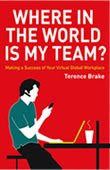
You probably know that there are currently four generations functioning side-by-side in today's workplace. I use the term 'functioning' loosely because much of what I read about generations fits into the 'WhineLit' genre - "Who are those people!!!!". Not so with Lisa Haneberg's new book Hip & Sage: Staying Smart, Cool and Competitive in the Workplace (Nicholas Brealey, 2009). Lisa's ambitious goal is to catalyze a revolution - "There is nothing so powerful and transformative as a strong partnership and collaboration between our sages and our youths." Her view is that those professionals who nurture hipness and sageness will have a competitive advantage over those that don't.
What does it mean to be 'hip' and or 'sage'?
Hipness is an ability to communicate, connect, and collaborate with those in younger generations. It is a key factor in one's ability to engage and influence younger workers like the Millenials.
Sageness is our natural strengths and characteristics, goals and priorities, and experiences that show up in our skills, drive, judgment, and knowledge.
Hip & Sage isn't just a philosophical text on the need for the generations to learn from one another. It's also very practical with lists, worksheets, web resources, reflective questions, and examples to guide the way. I particularly like the section where she asks us to reflect on how our beliefs fuel our behaviors and our ability to change. I also like where she talks about collaboration - as opposed to participation - and how it is as much a mind-set as a set of actions.
The book begins with the wonderful story of how the veteran singer Tony Bennett came to collaborate with the relative youngster k.d. lang. They were both backstage at a Grammy show and he simply walked over to her and said, "I'm Tony Bennett and someday I'd love to sing with you." How many of us Boomers can walk over to a young Millenial and say, "Please teach me about social networking." The world is changing much too fast to try and learn everything by ourselves.
Check out her book, and also visit her Hip & Sage website
here























